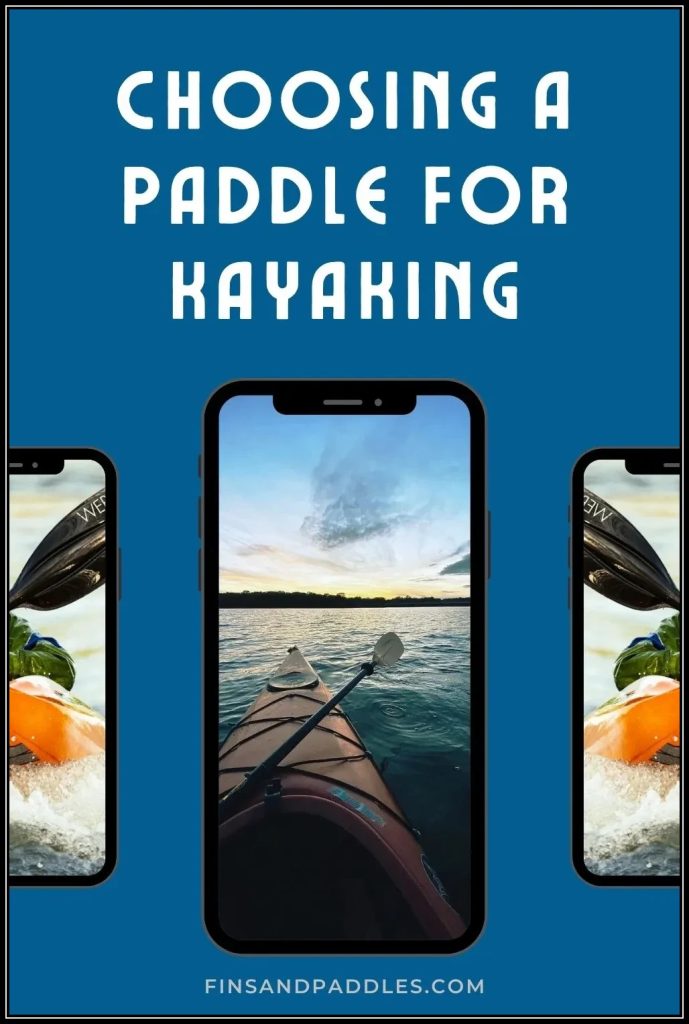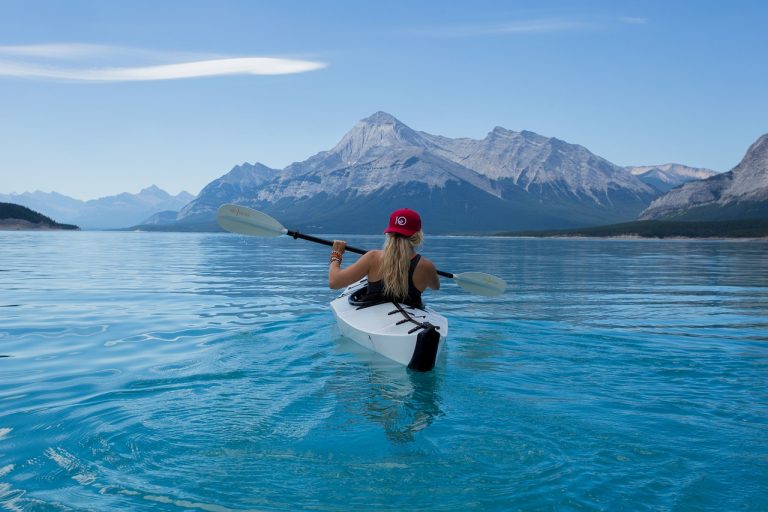Choosing a paddle for kayaking is no less important than the kayak itself. In deciding how to pick a paddle for a kayak, there are some key points you should consider, such as your needs and skill level.
In this guide we’ll cover the pivotal factors involved in choosing a paddle for kayaking so you can come to the best decision.

How to Pick the Right Kayak Paddle
Paddle Length
How to choose kayak paddle length: First of all, take into acount the width of your kayak, your height and your paddling style. As a general rule, the wider your kayak is, the longer your paddle should be. If your paddle is too short, you’ll be rocking to and fro in order to properly submerge your paddle plade at each stroke.
As a good starting point, select a paddle that reaches between your chin and nose when you’re standing upright.
Paddle Blade Shape
Kayak paddle blades come in different shapes, each one intended for a specific purpose:
- Straight blades: Commonly used in whitewater kayaking, straight blades provide a greater degree of maneuverability and control in rough water conditions.
- Spoon-shaped blades: These are ideal for recreational kayaking as they provide a smooth, efficient stroke.
- Asymmetrical blades: Specifically designed for touring and sea kayaking, asymmetrical blades deliver a more powerful and controlled stroke.
Paddle Shaft – Straight or Bent?
Unlike a straight paddle shaft, a bent paddle shaft has a kinked section, much like comparing a straight barbell shaft with an E-Z bar shaft. Kayakers can use these bent parts to grip the shaft at a more comfortable angle, thereby reducing fatigue in their wrists.
Paddle Material
Kayak paddles are made from a variety of materials, each one having its own advantages:
- Aluminium: aluminium paddles are long-lasting and less expensive, a good choice for a beginner or if you’re on a budget.
- Fibreglass: Fibreglass paddles are lightweight and possess a good balance of strength and flexibility.
- Carbon fibre: These are the most expensive option; however, they are also the lightest and are therefore good for minimizing fatigue on longer paddling sessions.
Paddle Grip
The paddle should feel comfortable in your hands. Look for a paddle that has ergonomic grips – it can minimize the strain on your fingers and wrists.
Paddle Feathering
A kayaking paddle can be either matched or feathered. With matched paddles, both blades are set to the same angle. With feathered paddles, the blades are set at an angle to each other, which is said to reduce wind resistance on the blade that is out of the water. However, not all kayakers agree with this.
Paddle Accessories
Here are some paddle accessories that might enhance your kayaking sessions:
A paddle leash can keep your paddle secured to your craft and prevent it drifting away if you capsize.
Paddle clips or bungees are useful for holding your paddle in place when you want to free your hands for other activities, such as snacking, fishing or taking photos.
Choosing a paddle for kayaking is a blend of art and science. It’s about understanding the technical aspects and indulging your own preferences and paddling style.
Pin this image on Pinterest:


